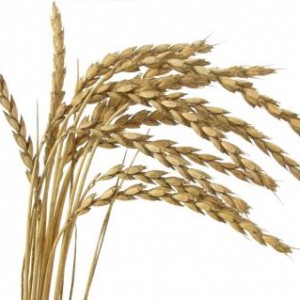News
Americans eating more whole grains
2 Sep 2015According to new data from the World Grain Council’s (WGC) 2015 Whole Grains Consumer Insights Survey, Americans have taken on board the 2005 Dietary Guidelines which encouraged Americans to “make at least half our grains whole.” The survey uncovered that nearly two-thirds of Americans say they’re making half or more of their grains whole. With […]

 According to new data from the World Grain Council’s (WGC) 2015 Whole Grains Consumer Insights Survey, Americans have taken on board the 2005 Dietary Guidelines which encouraged Americans to “make at least half our grains whole.” The survey uncovered that nearly two-thirds of Americans say they’re making half or more of their grains whole.
According to new data from the World Grain Council’s (WGC) 2015 Whole Grains Consumer Insights Survey, Americans have taken on board the 2005 Dietary Guidelines which encouraged Americans to “make at least half our grains whole.” The survey uncovered that nearly two-thirds of Americans say they’re making half or more of their grains whole.
With the help of SSI (Survey Sampling International), WGC reached out to 1,510 U.S. adults from July 27 to August 3, 2015. The goals were to find out how whole grain consumption has changed since 2010, what percentage of people have stopped eating gluten, and how consumers actually use the Whole Grain Stamp and more.
- Nearly two-thirds (64%) have increased whole grain consumption “some” or “a lot” in the last five years.
- Almost one-third of respondents (31%) say they nearly always choose whole grains. Five years ago, only 4% would have said this.
- Another third (32%) choose whole grains about half the time. Combined with the “nearly always” group, this makes 63% making half or more of their grains whole, in line with the Dietary Guidelines for Americans.
- We eat about 37% of our whole grains at breakfast, 27% at dinner, 22% at lunch, and just 14% as snacks.
- Nearly 9 out of 10 (86%) of those who consume whole grains do so for the health benefits.
- Four in 10 (40%) choose whole grains because they enjoy the taste.
- Cost was named as the leading barrier to eating more whole grains (39%).
- Some folks aren’t yet accustomed to the fuller, nuttier taste of whole grains (37%).
- Availability can also be a barrier (28%), especially since many restaurants don’t offer whole grain choices.
- Few fully understand gluten. While more than 1 in 3 correctly identify gluten as a protein found in wheat, barley and rye, and 1 in 5 know it makes dough rise, only 4% correctly selected both (and no other options).
- 21% incorrectly think gluten is in all grains.
- 93% eat gluten some or all of the time. Of the 7% who completely avoid gluten, only 1 in 5 has a medically-diagnosed problem with gluten.
- Old favourites — whole wheat, oats, and brown rice — are most popular with Americans. 9 out of 10 have heard of these three whole grains, and most have eaten them.
- Despite all the attention paid to “exotic” grains, fewer than 1 in 5 has heard of spelt, farro, amaranth, Kamut, or teff.
- When asked to name their one favourite whole grain food, the top choice was whole wheat bread (31%), followed by oatmeal (27%) and then a tie between popcorn and whole grain cold cereal (15% each). Whole grain pasta was the favourite of 8%.
- Whole grain bread and whole grain cereal (hot and cold) are the two foods most likely to be eaten in whole grain form by Americans.
- 49% of people are aware of the Whole Grain Stamp.
- Eight out of ten (82%) trust the Whole Grain Stamp to accurately state a product’s whole grain content.
- 79% say the Whole Grain Stamp would make them more likely to buy a product; about half of these would also consider sugar, sodium, and other product factors.
- About half (51%) say they would question a product’s claims about whole grains if they did not see the Whole Grain Stamp.
